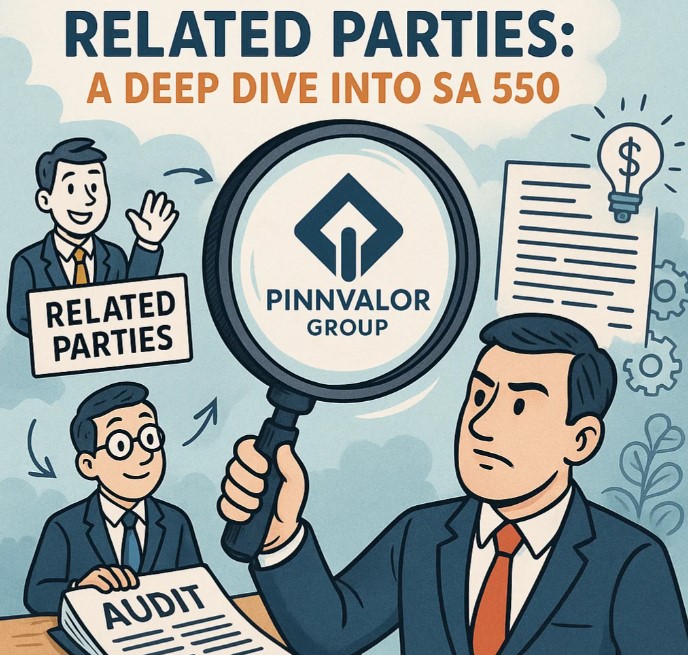
Auditor’s Lens on Related Parties: A Deep Dive into SA 550
Standard on Auditing (SA) 550 focuses on the auditor’s responsibilities regarding Related Party Transactions (RPTs) during the course of an audit. These transactions, while often legitimate, can pose significant risk of material misstatements or fraudulent reporting. SA 550 mandates auditors to apply heightened professional skepticism when identifying, evaluating, and reporting such transactions.
Can auditors truly trust transactions when relationships blur the lines?
Trust, but verify—especially when relationships influence the numbers. SA 550 teaches auditors to decode more than just disclosures.
🔍 What Are Related Party Transactions?
Related party transactions are transactions that occur between entities that have a pre-existing relationship, such as:
- Parent companies and subsidiaries
- Directors and their companies
- Key management personnel and their relatives
- Joint ventures or associates
Because these relationships may influence the transaction terms, they demand greater audit attention to ensure transparency and fairness.
📘 Objectives of SA 550
The standard aims to:
- Obtain an understanding of related party relationships and transactions
- Assess the risk of material misstatement related to such transactions
- Ensure proper disclosure in accordance with the applicable financial reporting framework
🔎 Identifying Related Parties – The Auditor’s Approach
Auditors must employ inquiry-based and analytical procedures to identify related parties. This includes:
- Inquiring with management and those charged with governance
- Reviewing prior year audit working papers and board minutes
- Analyzing unusual transactions or balances

🧩 Assessing the Risks Involved
RPTs can often be used to obscure the true financial position or performance of an entity. Common risks include:
- Non-arm’s length pricing
- Undisclosed liabilities
- Fraud through fictitious arrangements
📋 Audit Procedures under SA 550
Once related parties are identified, the auditor must:
- Evaluate the business rationale behind transactions
- Examine the terms and conditions of such arrangements
- Obtain written representations from management
- Corroborate disclosures with external confirmations and documentation
💬 Communication with Those Charged with Governance
SA 550 also requires the auditor to communicate significant related party transactions and any fraud risk indicators to those charged with governance—strengthening the audit trail and accountability.
📝 Disclosure Requirements
Proper disclosure of RPTs is critical. The financial statements should present:
- Nature of the relationship
- Volume and terms of the transactions
- Outstanding balances at the reporting date
Failure to disclose appropriately may lead to qualified or adverse audit opinions.
✅ Conclusion: Ensuring Integrity and Transparency
SA 550 plays a pivotal role in reinforcing the reliability of financial statements. By mandating rigorous scrutiny of related party transactions, it enhances corporate transparency, mitigates fraud risks, and upholds stakeholder trust. For auditors, it’s not just about compliance—it’s about cultivating a deeper understanding of the entity’s ecosystem and acting as a vigilant gatekeeper.
💡 Key Takeaway:
“Related party transactions aren't inherently wrong—but undisclosed ones are always risky.”
